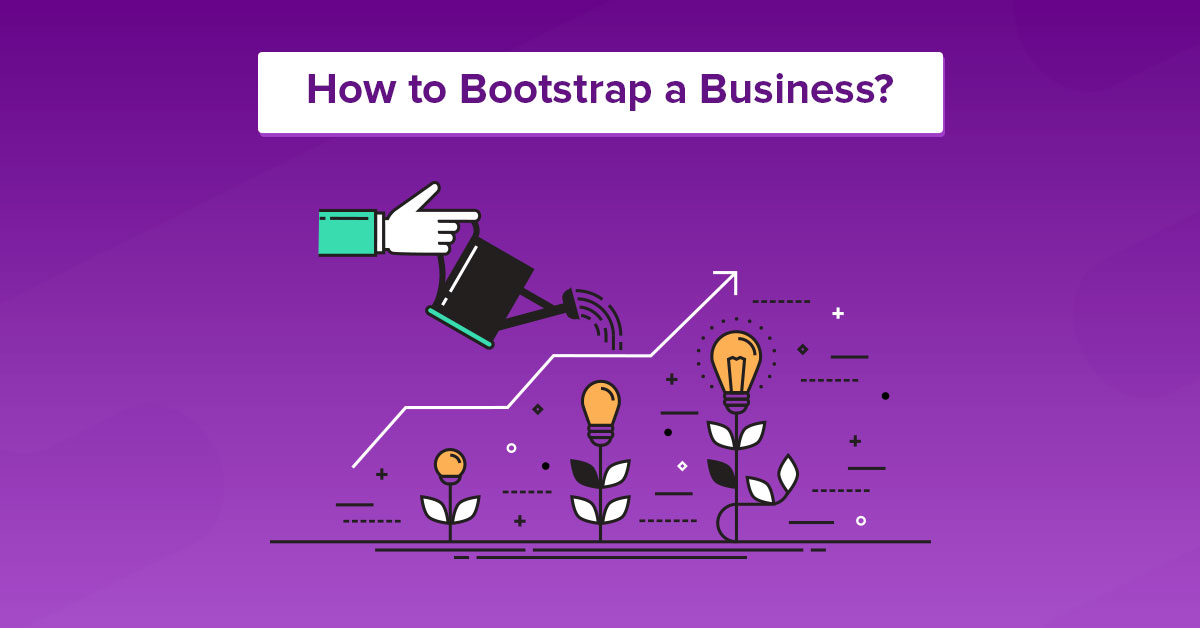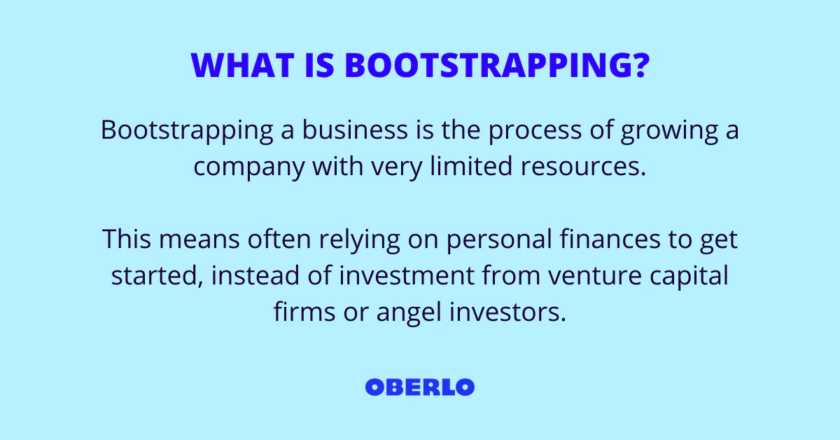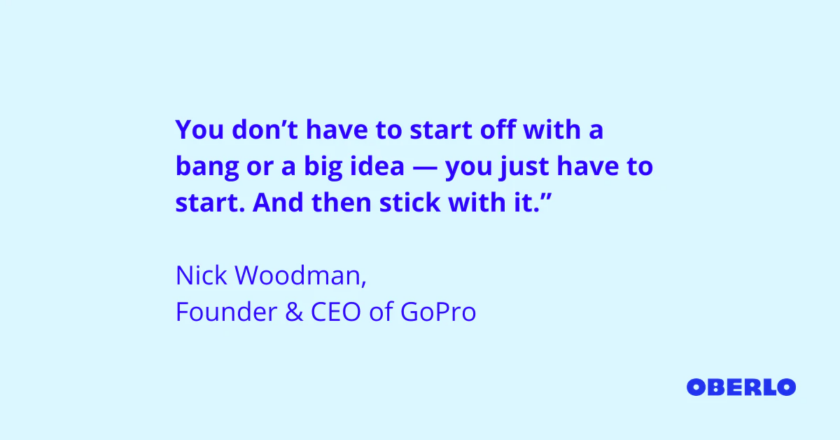
Starting a business can be difficult. Know the meaning of Bootstrapping A Business.
It takes a significant investment of time and money to build your offering, analyze your target market, and generate consistent sales.
As a result, many people assume they must locate affluent investors willing to put up large sums of money to get the business off the ground.
But this is just not the case.
There is a way to start a business if you don’t have a lot of money. Bootstrapping a business is a tried and effective method of launching a profitable venture.
But what exactly is bootstrapping? And how do you launch a bootstrapped business?
Continue reading to discover out.
What is Bootstrapping a Business?

The process of starting and growing a business with extremely few resources is known as bootstrapping. A bootstrapped entrepreneur would frequently rely on personal funds to get started rather than funding from venture capital firms or angel investors.
A bootstrapped business relies nearly exclusively on consumers to provide the funds needed to expand from the start.
What Is the Meaning of Bootstrapping?
“Pull yourself up by your bootstraps,” as the old adage goes. This expression is derived from the old boots that had straps on the sides to help people put them on.
Over time, the concept of pulling yourself up by your bootstraps became a popular metaphor for the act of changing your life circumstances via your own efforts.
An Example of a Successful Bootstrapping Business
GoPro, the action camera firm, is an outstanding example of a business that was bootstrapped.
Nick Woodman began this bootstrapped firm with $10,000 he earned from selling bead and shell belts from the back of his van.
Woodman invented the initial product, built the prototype, oversaw manufacturing, and sold it to suppliers all while living at home with his parents.
When GoPro’s initial public offering (IPO) was value at $2.96 billion, it became a billion-dollar company.
“The early days of GoPro are a terrific lesson [about] the possibility of a simple beginning,” Woodman added. “You don’t have to start off with a bang or a great idea – you simply have to start. And then follow through.”

There are numerous examples of successful bootstrap startups. Apple, Dell, and Coca-Cola are among the world’s top corporations.
How Bootstrapping a Business Works
Here are some pointers to help you launch a bootstrapped business.
1. Obtain Startup Capital
The most difficult aspect of bootstrapping a business is getting it off the ground.
Most businesses require some type of investment to get start, even if it is small. You could need to improve your computer, buy inventory, or order parts to make a prototype, for example.
You’ll need to discover a way to pay for these first necessities without outside investment. Here are three common ways to accomplish this:
- Use your earnings or savings
- Take out a personal loan or use your credit line.
- Borrow money from family or friends.
2. Concentrate on What You Know and Enjoy
When bootstrapping a business, you are unlikely to have the resources to seek expert aid.
Starting a business with minimal expertise, even if it appears to have enormous potential, is a prescription for catastrophe.
Success requires intimate knowledge of your target audience.
So, make sure you start a business in an area or specialty that you understand and enjoy. Plus, you’re already tapping into a network of relevant people who can assist you in growing your firm.
3. Create Something Unique
“Build and own an asset that’s difficult to replicate,” entrepreneur Seth Godin remarked at the Bootstrappers Workshop.
Why?
Because a larger company with more resources can take your idea and scale it much faster if you build a successful product or service that is easy to replicate.
To avoid this issue, build a service that is unique to you or difficult to imitate.
4. Select a Cash Flow Optimized Business Model
A business that is bootstrap relies on cash flow from sales to fund growth. So, before you go in, think about selecting a business plan that maximizes cash flow.
For example, one-time product sales necessitate a substantial marketing expense in order to attract new customers. Subscription services, on the other hand, generate ongoing revenue without the requirement for a huge marketing spend.
5. Test Your Business Concept
CB Insights reports that 42 percent of small firms fail due to a lack of market demand.
In other words, not enough individuals are interest in what these companies sell.
So, before you invest your limited time and resources in your small business idea, ensure that your target market is willing to pay for it.
“Don’t search customers for your products, discover things for your customers,” says Seth Godin.
6. Maintain Low Costs
When you don’t have a war chest of cash or investors waiting in the wings to save your business, you have to be economical.
So, seek for ways to save money.
For example, instead of renting an office space, you may start your business from home. This is also lot easier nowadays, thanks to the prevalence of working from home and online communication.
According to the Small Business Administration, approximately half of all enterprises are run from home. Furthermore, many prominent entrepreneurs, such as Apple co-founders Steve Jobs and Steve Wozniak, began at home.
7. Concentrate on Profits
When bootstrapping a firm, your capacity to grow is based on reinvesting revenues back into the business. So, from the start, concentrate on keeping earnings flowing.
It is worth noting that certain sorts of enterprises make it easier to earn money from the start.
A brick-and-mortar retail store, for example, can cost hundreds of dollars each month, whereas a Shopify ecommerce store costs only $29 per month. This makes it easy to start making money rapidly.
Furthermore, the dropshipping approach allows you to sell things online without having to buy inventory in advance — you simply buy products once you’ve sold them.

8. Think Long-Term
A business that is bootstrapped is a long-term strategy.
To offer investors with a handsome payoff, funded enterprises frequently attempt to develop quickly and reach a lucrative exit within 10 years.
A bootstrapped business, on the other hand, grows and advances slowly.
To ensure longevity, give exceptional customer service and follow the counsel of Google co-founder Larry Page: “Always deliver more than expected.”
9.Select Team Members With Care
Your initial employees, like your clients, are key investors in your company. So chose them wisely.
People who work with you should understand that if they don’t succeed, neither will the company.
Be a goal-oriented and strong leader. Ensure that your workforce feels valued and personally invested in the company’s objective. You might also try giving your staff stock in the company to encourage loyalty and commitment.
10. Make use of organic marketing channels
When you’re bootstrapping a firm, it can be tempting to spend your limited funds on advertising through channels like Facebook.
But keep in mind to play the long game.
Rather than employing paid marketing channels, begin with free organic marketing techniques.
In the business-to-business sector, for example, you may perform direct outreach via email or social media. In the business-to-consumer space, you could generate content that ranks well in search engines and leverage it in social media marketing.
Summary: Starting a Business from Scratch
The process of creating a firm without outside investment is known as bootstrapping. Instead, the bootstrap entrepreneur relies on reinvesting business revenues to build the business.
In conclusion, here are ten suggestions to assist you bootstrap your business to success:
- Gather a small sum of money to get started.
- Create a business that you are enthusiastic about. Create a distinctive product or service that competitors will find tough to copy.
- Choose a business plan that contributes to positive cash flow.
- Conduct real-world tests to determine that your offering is in demand.
- Keep your prices minimal and your budget in check.
- Focus on turning a profit right away and continually reinvesting in the firm.
- Focus on turning a profit right away and continually reinvesting in the firm.
- Play the long game and concentrate on providing the greatest possible service to your target market.
- Select team members with care and make sure they are invested in the company.
- Prioritize organic promotion, such as social media marketing and SEO, at first.
Finally, here’s a quote from Hootsuite co-founder Ryan Holmes: “When in doubt, bootstrap.”
Frequently Asked Questions
1. What is the primary goal of bootstrapping?
Bootstrapping is the process of starting and running a business using only personal funds or operating revenue. This type of funding allows the entrepreneur to retain greater control while simultaneously increasing financial stress. We think this answer would help you to understand the meaning of bootstrapping a business.
2. What are the benefits of bootstrapping?
The entrepreneur gains valuable expertise while only risking his own money. It means he will not be obliged to repay loans or other borrowed funds if the business fails. If the project is successful, the business owner will be able to save money and attract investors.
3. What exactly are bootstrapping techniques?
The bootstrap method is a statistical approach used to estimate population numbers by averaging estimates from several small data samples. Importantly, samples are created by selecting observations from a big data set one at a time and returning them to the data set once they have been chosen.
4. Why do startups need bootstrapping?
According to one statistic, more than 80% of businesses in India are bootstrapped. Bootstrapping allows entrepreneurs to focus their time and energy on the product or service they offer rather than finding resources for cash investment, allowing them to maintain complete control.
5. Why do some business owners adopt bootstrapping?
When launching a firm, entrepreneurs must make many financial considerations, one of which is whether to fund their own venture or seek equity capital. When an entrepreneur bootstraps, they establish and grow a firm with their own money and company earnings.



